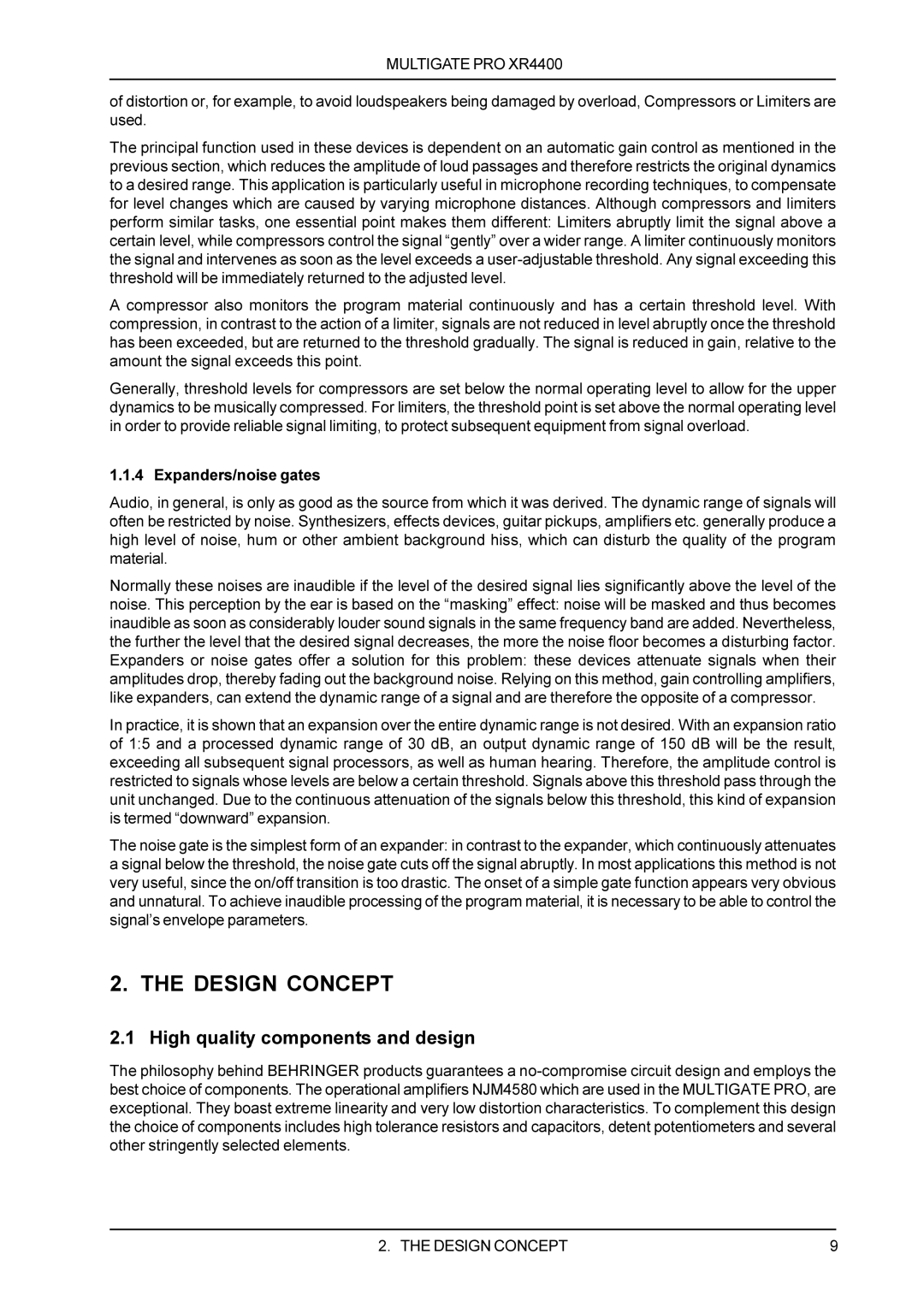
MULTIGATE PRO XR4400
of distortion or, for example, to avoid loudspeakers being damaged by overload, Compressors or Limiters are used.
The principal function used in these devices is dependent on an automatic gain control as mentioned in the previous section, which reduces the amplitude of loud passages and therefore restricts the original dynamics to a desired range. This application is particularly useful in microphone recording techniques, to compensate for level changes which are caused by varying microphone distances. Although compressors and limiters perform similar tasks, one essential point makes them different: Limiters abruptly limit the signal above a certain level, while compressors control the signal “gently” over a wider range. A limiter continuously monitors the signal and intervenes as soon as the level exceeds a
A compressor also monitors the program material continuously and has a certain threshold level. With compression, in contrast to the action of a limiter, signals are not reduced in level abruptly once the threshold has been exceeded, but are returned to the threshold gradually. The signal is reduced in gain, relative to the amount the signal exceeds this point.
Generally, threshold levels for compressors are set below the normal operating level to allow for the upper dynamics to be musically compressed. For limiters, the threshold point is set above the normal operating level in order to provide reliable signal limiting, to protect subsequent equipment from signal overload.
1.1.4 Expanders/noise gates
Audio, in general, is only as good as the source from which it was derived. The dynamic range of signals will often be restricted by noise. Synthesizers, effects devices, guitar pickups, amplifiers etc. generally produce a high level of noise, hum or other ambient background hiss, which can disturb the quality of the program material.
Normally these noises are inaudible if the level of the desired signal lies significantly above the level of the noise. This perception by the ear is based on the “masking” effect: noise will be masked and thus becomes inaudible as soon as considerably louder sound signals in the same frequency band are added. Nevertheless, the further the level that the desired signal decreases, the more the noise floor becomes a disturbing factor. Expanders or noise gates offer a solution for this problem: these devices attenuate signals when their amplitudes drop, thereby fading out the background noise. Relying on this method, gain controlling amplifiers, like expanders, can extend the dynamic range of a signal and are therefore the opposite of a compressor.
In practice, it is shown that an expansion over the entire dynamic range is not desired. With an expansion ratio of 1:5 and a processed dynamic range of 30 dB, an output dynamic range of 150 dB will be the result, exceeding all subsequent signal processors, as well as human hearing. Therefore, the amplitude control is restricted to signals whose levels are below a certain threshold. Signals above this threshold pass through the unit unchanged. Due to the continuous attenuation of the signals below this threshold, this kind of expansion is termed “downward” expansion.
The noise gate is the simplest form of an expander: in contrast to the expander, which continuously attenuates a signal below the threshold, the noise gate cuts off the signal abruptly. In most applications this method is not very useful, since the on/off transition is too drastic. The onset of a simple gate function appears very obvious and unnatural. To achieve inaudible processing of the program material, it is necessary to be able to control the signal’s envelope parameters.
2. THE DESIGN CONCEPT
2.1 High quality components and design
The philosophy behind BEHRINGER products guarantees a
2. THE DESIGN CONCEPT | 9 |
